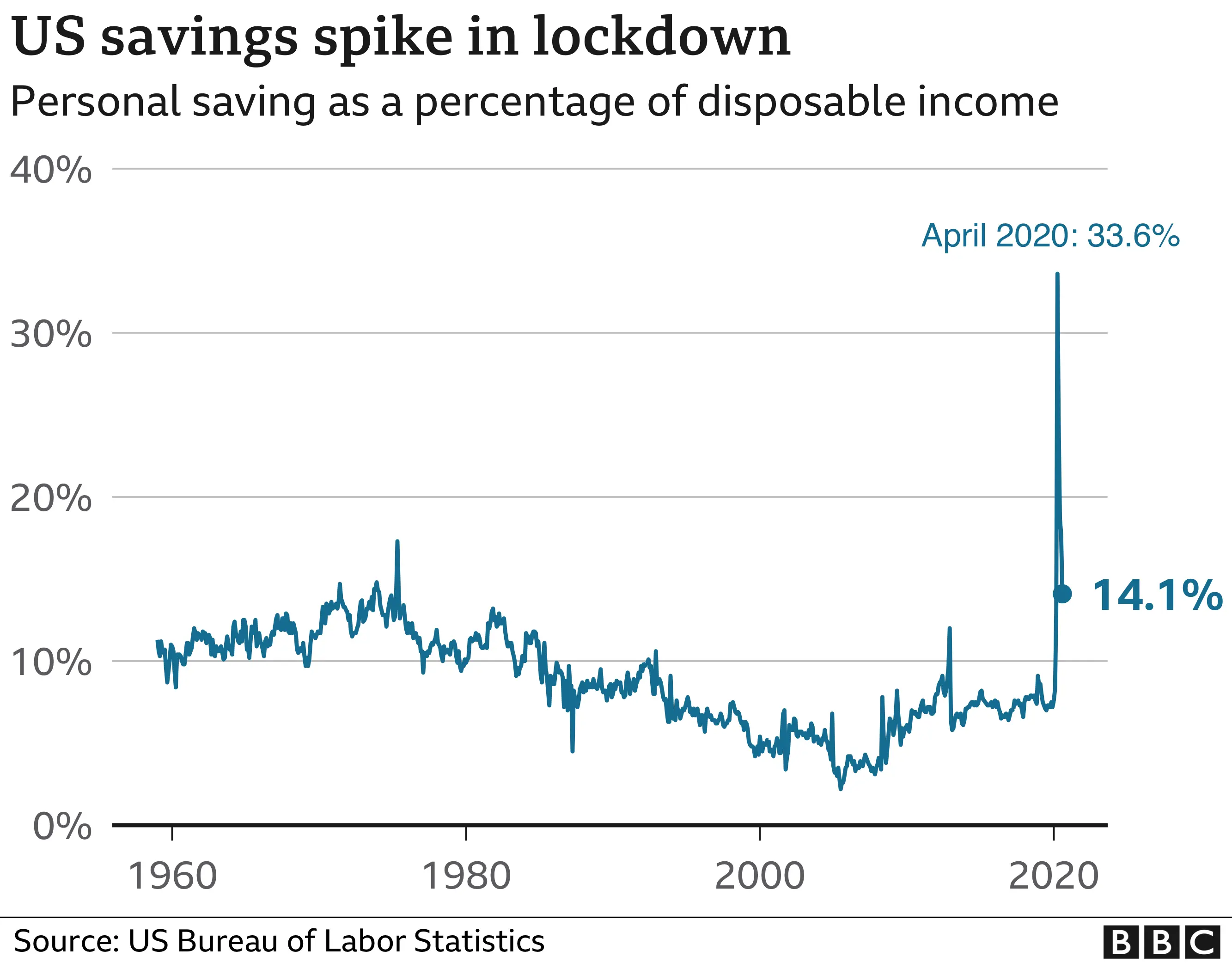Coronavirus: 'Lockdown was madness but saved us financially'
 Paula A
Paula AThe coronavirus pandemic has hit the global economy hard, but some people's personal finances have never looked better.
Since the US shut down en masse in March, mum-of-three Paula, who lives in New Hampshire, has paid off some $20,000 (£15,270) in credit card debt the family had racked up in the aftermath of an unexpectedly expensive work relocation.
The 35-year-old's job as an analyst ended in June, but her husband is still working and she benefited from a temporary $600 boost to weekly unemployment payments Congress approved in response to the crisis.
She put coronavirus stimulus cheques from the government towards the credit card payments, as well as thousands of dollars the family has saved since their children are not attending day care, preschool or summer camp. Already frugal when it came to eating out, the family has become even more so, she says. Their one big splurge has been bicycles.
"The quarantine has been very helpful to save money for us," she says. "We were at home, which was madness, pure madness but… I think it saved us financially."
Savings surge
The personal saving rate in the US - an average that reflects the share of income people have put away after spending and tax payments - nearly quadrupled between February and April, when it hit an all-time record of 33.6%.
Though lockdowns have eased since then, savings remain unusually high, boosted by government coronavirus assistance. In August, the personal saving rate in the US was 14.1% - greater than any pre-pandemic time since 1975.

The rise helped Americans' household wealth rebound to a record high in the three months to July, while overall debt declined for the first time since 2014.
"What's unique about this situation is that government programmes have supported household incomes but business closures limited their spending opportunities and so we've seen... record personal saving rates," says Sara Johnson, executive director of global economics at IHS Markit.
Rich-poor divide
Those circumstances are poised to change, however, as government aid runs out.
In the US, the $600 expansion to weekly unemployment payments expired at the end of July - and politicians in Washington remain at an impasse when it comes to further relief.
At a hearing in Washington this month, the head of America's central bank outlined the risks ahead.
"Savings are very high," Federal Reserve chair Jerome Powell said, citing government aid. "But 11 million people are out of work and the risk is that over time, they go through those savings and so their spending will decline, their ability to stay in their homes will decline and the economy will feel those negative effects."
Government support had helped mask sharp differences in how much individual families have managed to put away, but research has found the richest households, who are also less likely to have lost jobs or income, have driven much of the increased saving.
As financial support from the government winds down, the divide between rich and poor is expected to grow, as people who have lost jobs are forced to dig into savings to cover their expenses.
"People with higher incomes are doing more of the saving and people with very low incomes have been saving a little bit... but there's an open question about whether that will continue," says Olivia White, partner at McKinsey & Co, which has surveyed households in 30 countries about pandemic finances.
'Emergency fund'
Meanwhile, economists warn richer households are likely to continue to limit their spending until health concerns are more clearly resolved and the economy is in better shape.
 John Kennedy
John Kennedy In Tennessee, 35-year-old John Kennedy and his wife, who both work in education, have been putting away an extra $2,000 to $4,000 a month since March, thanks to reduced childcare costs, fewer work lunches and coffees, and the elimination of date nights and other entertainment.
Some of those expenses, like childcare, will return. But he says he has no plans to start spending more significantly, given the wider economic uncertainty.
"We're saving more than we've ever saved and part of it is just because we can, but then the other part is we almost feel like we need to," he says. "Depending on how things shake out in the next six to 12 months, ideally we're both employed still but if not then that emergency slash savings fund is just the emergency fund."
The potential for prolonged pullback bodes ill for the rebound in the US, where consumer spending drives more than two-thirds of the economy.
"The pandemic has delivered a major hit to consumer spending and it's really the sector of the economy to watch which signals how the recovery will unfold," says IHS Markit's Sara Johnson.
Consumer spending started to rebound over the summer, fuelling hopes that the level of savings might power a rapid recovery. But the rate of increase has since slowed.
Even if spending were to recover overall, ongoing restrictions in many sectors such as travel, mean those hurt most financially due to the virus won't be well-positioned to benefit, warns Michaela Pagel, a professor at Columbia Business School.
"People cannot spend in those areas where people lost their jobs," she says. "They cannot generate income for people who really need it."
